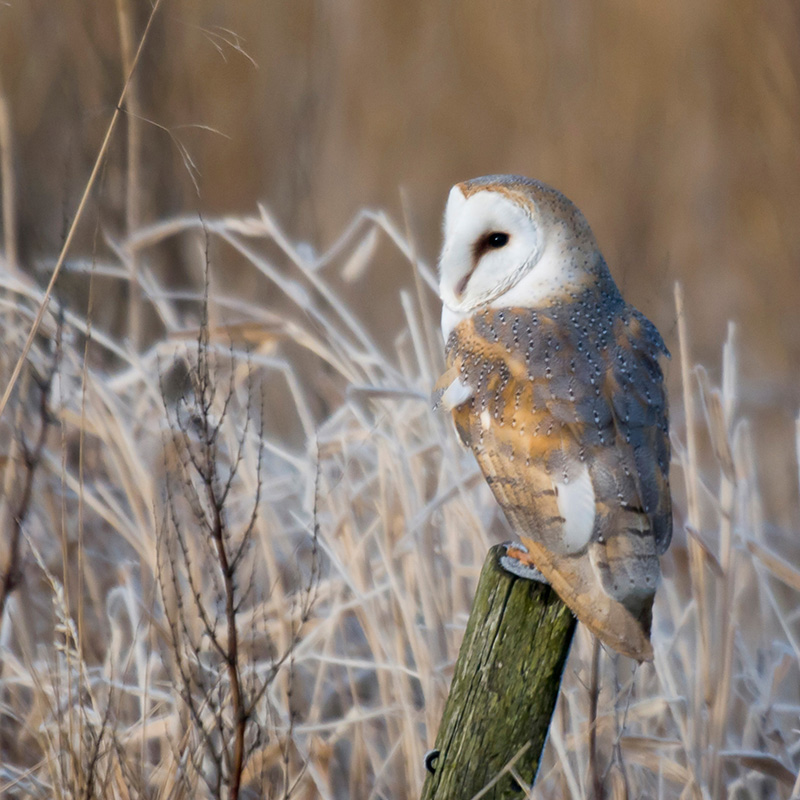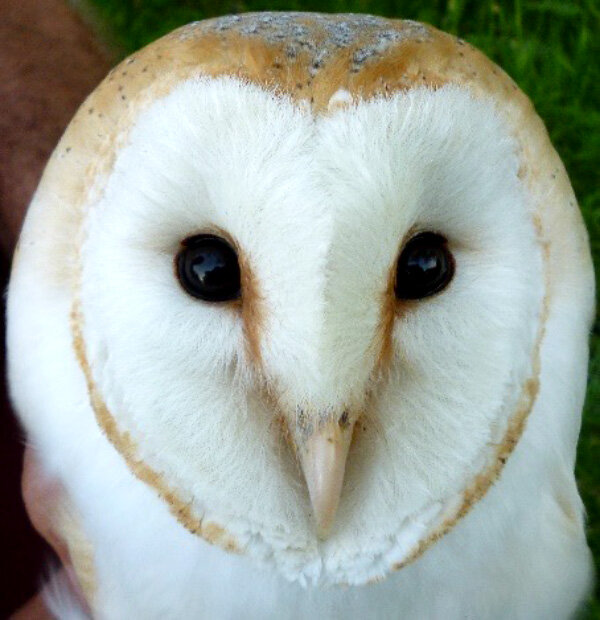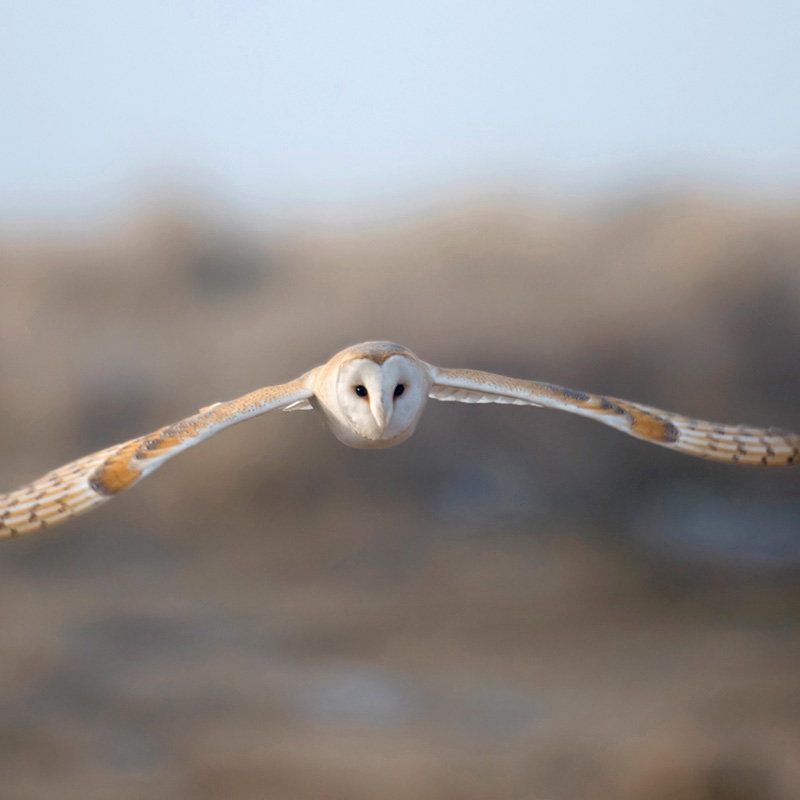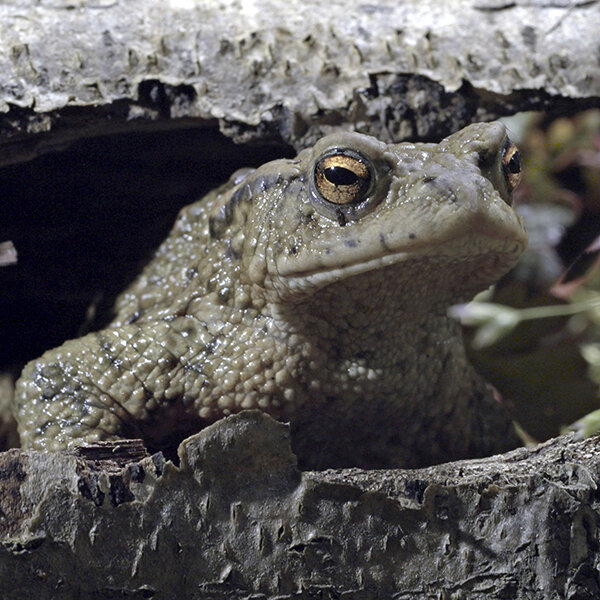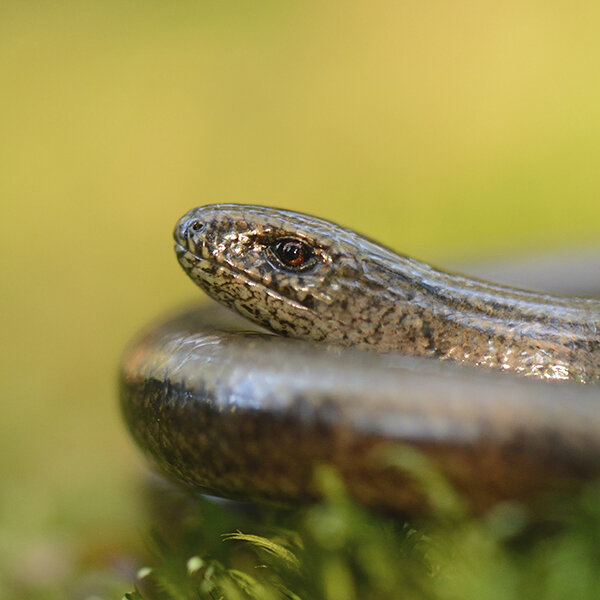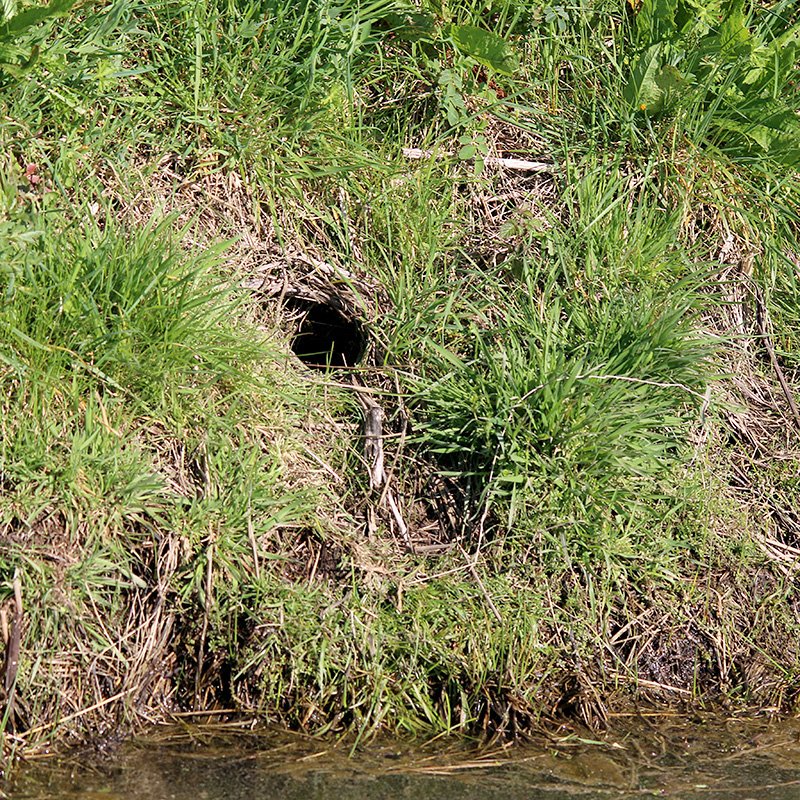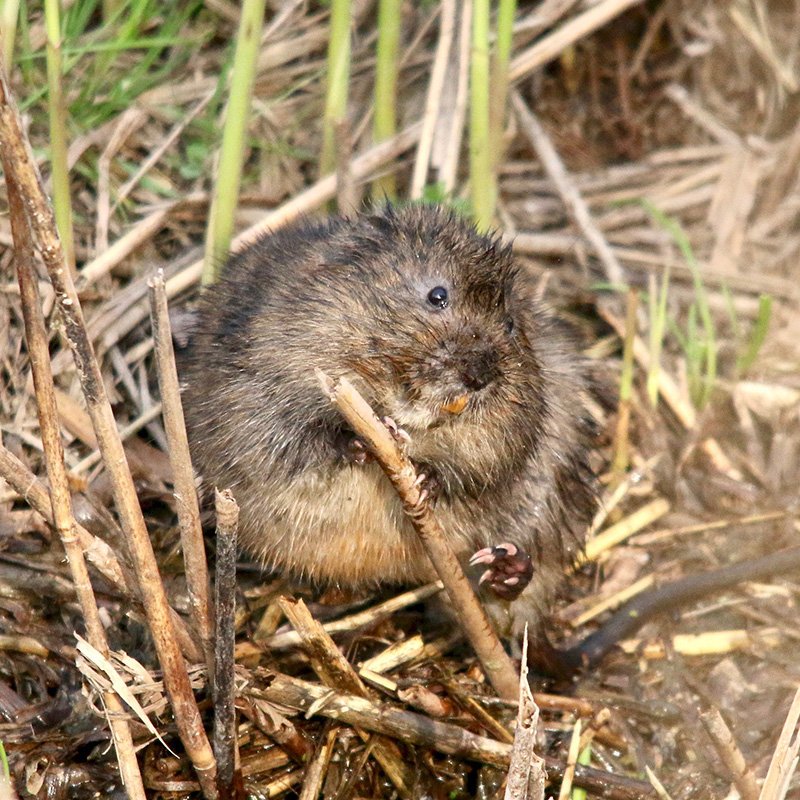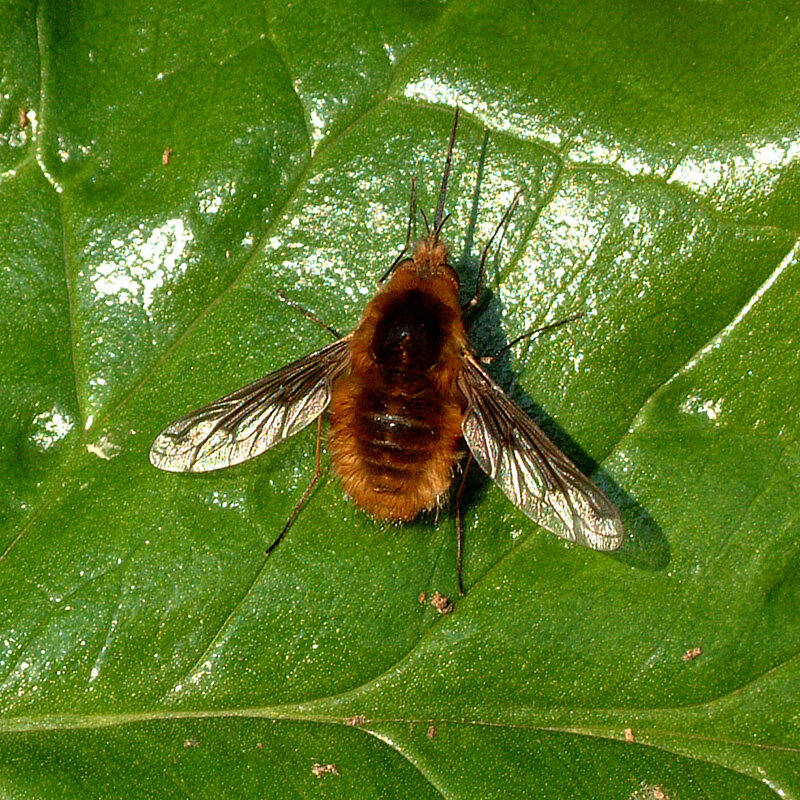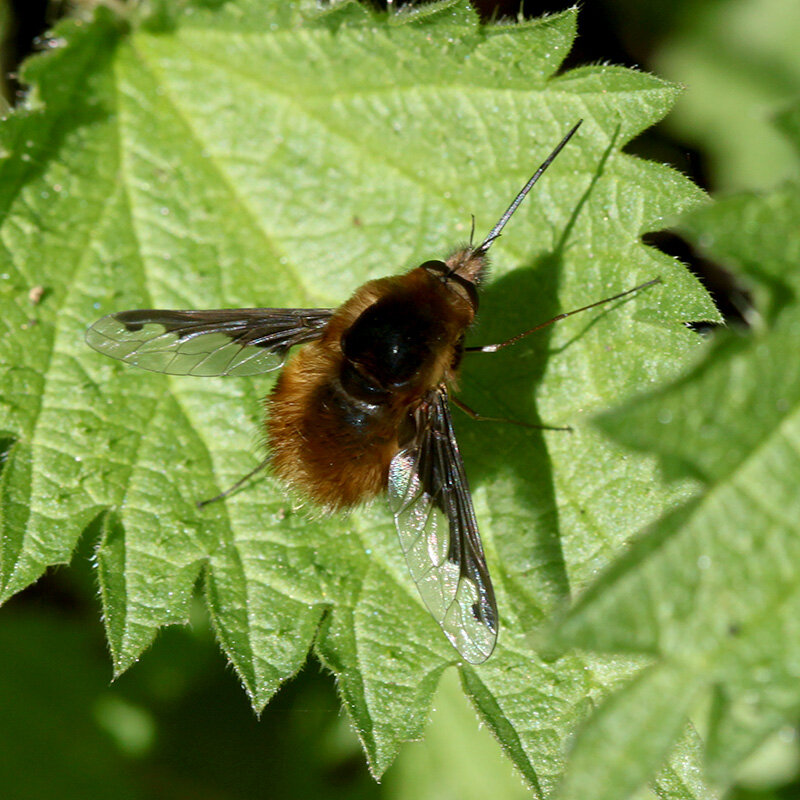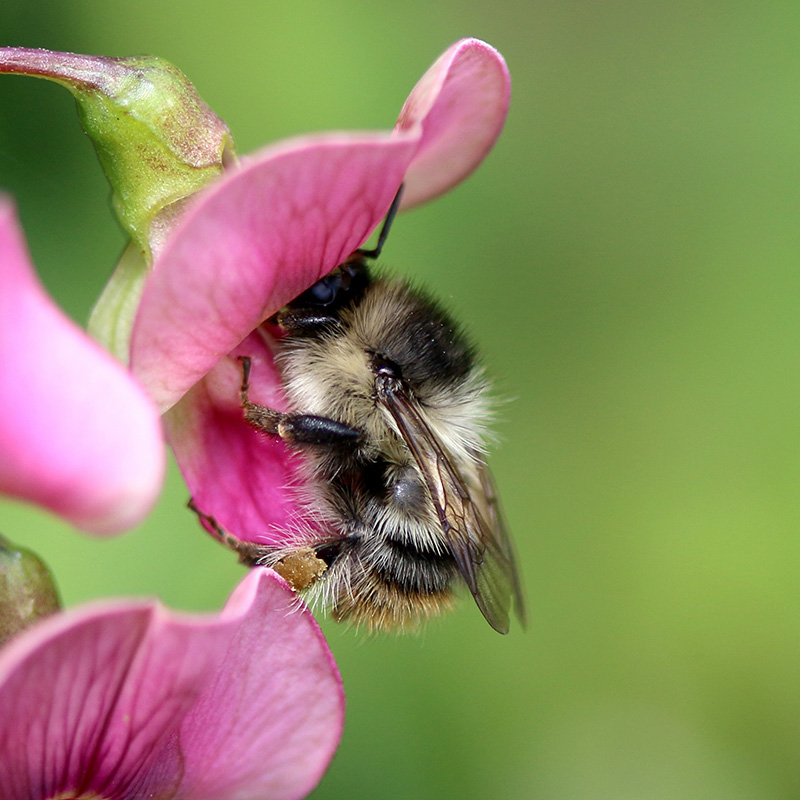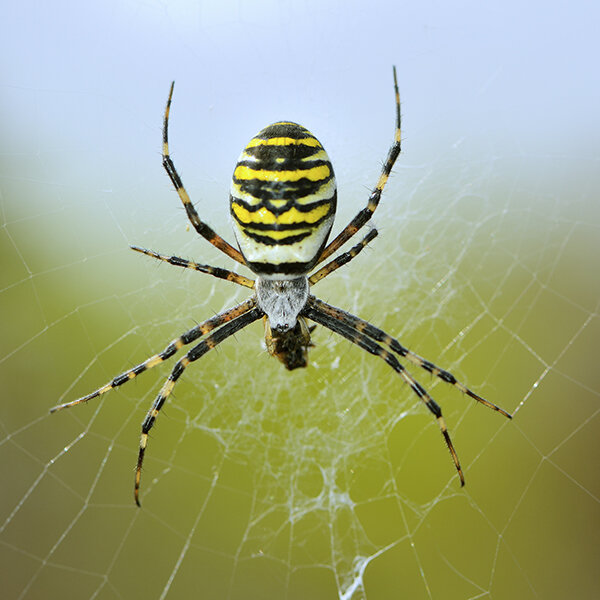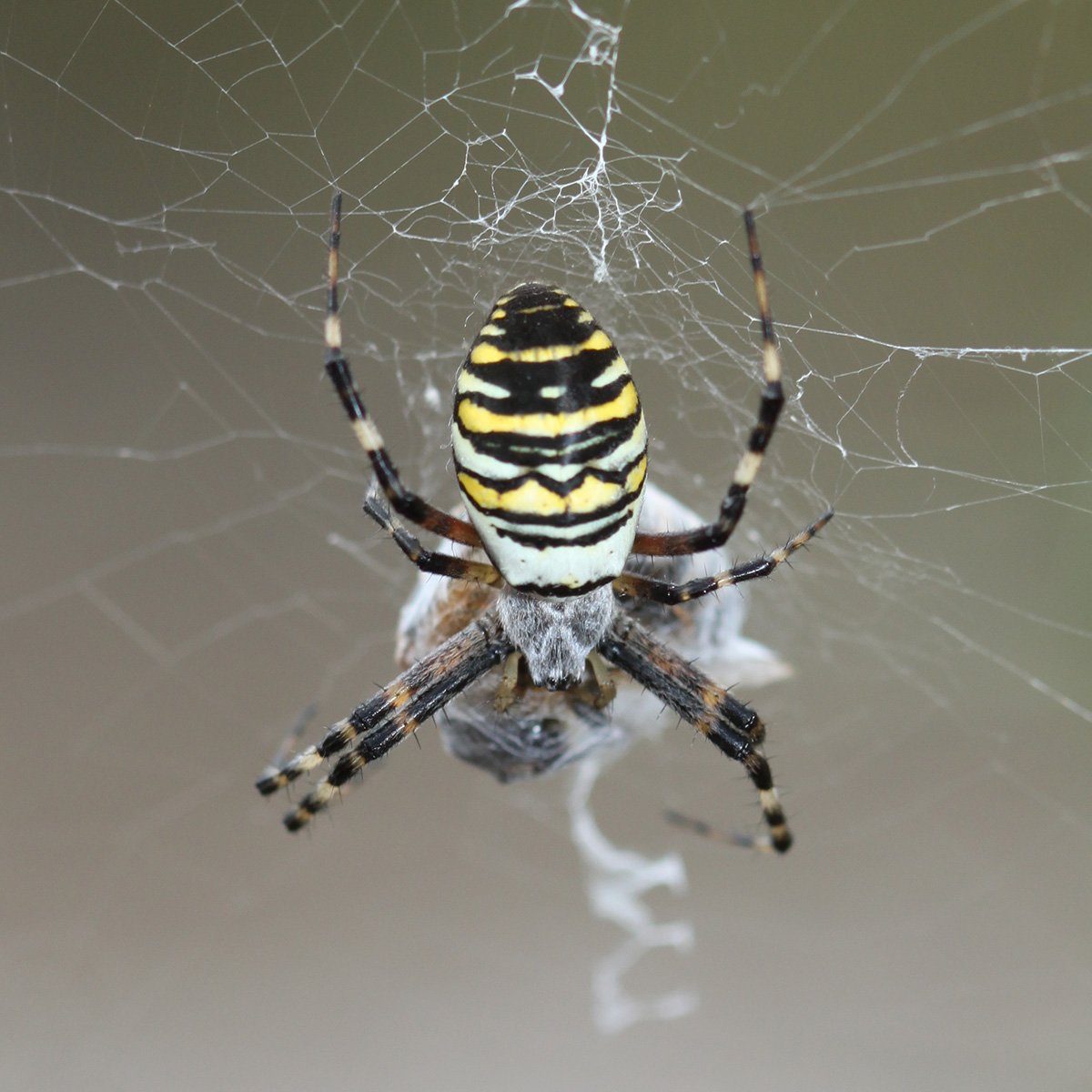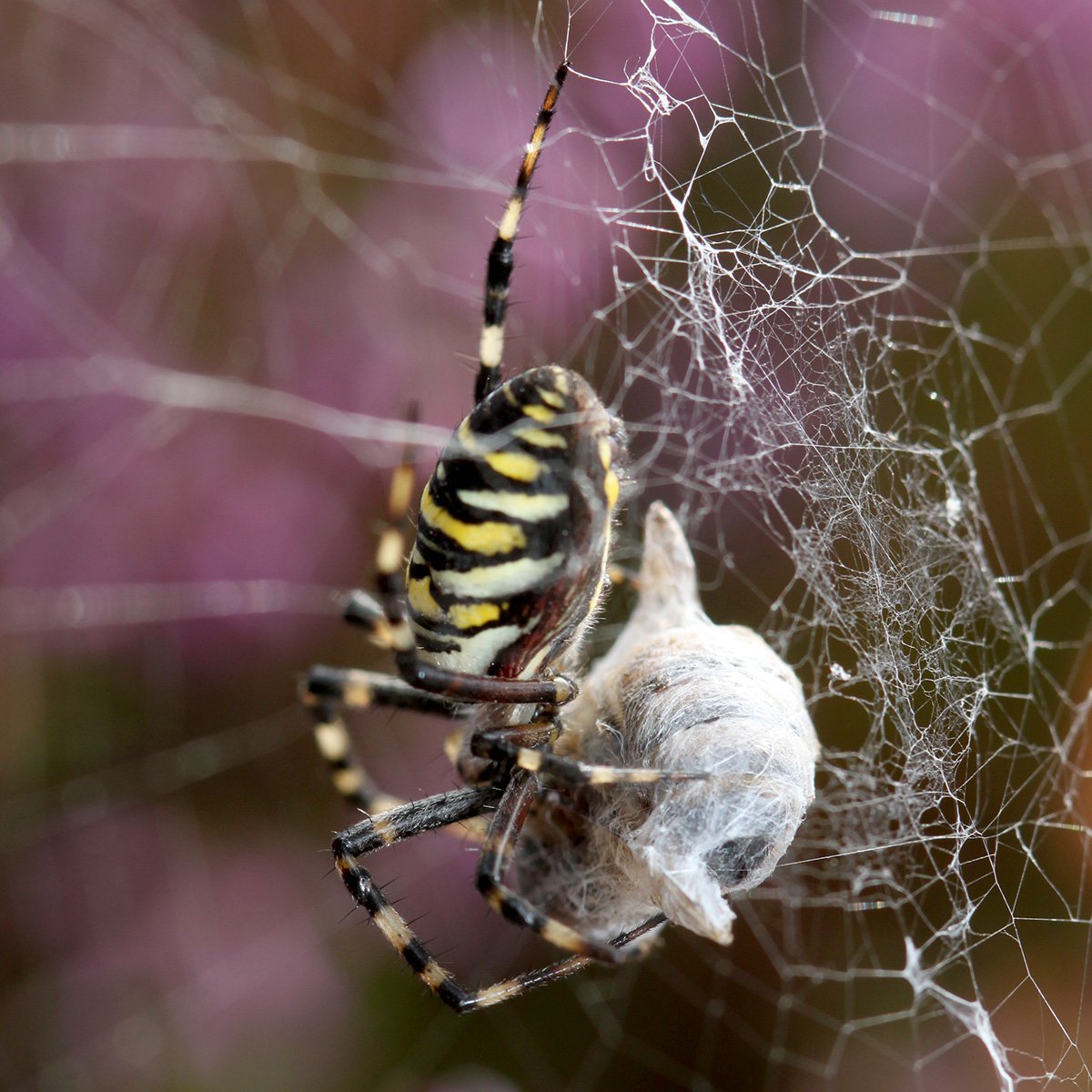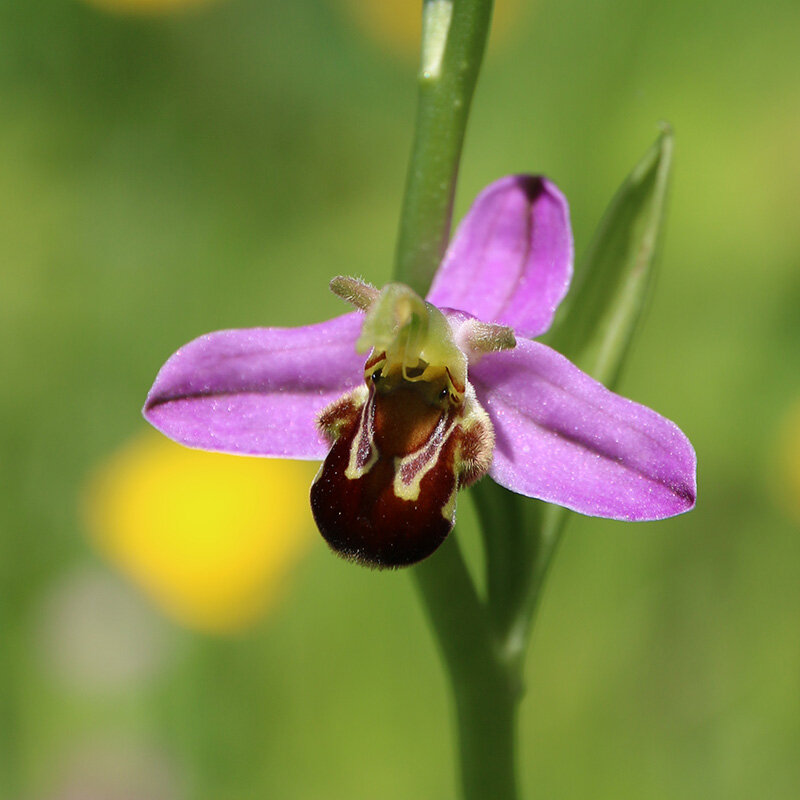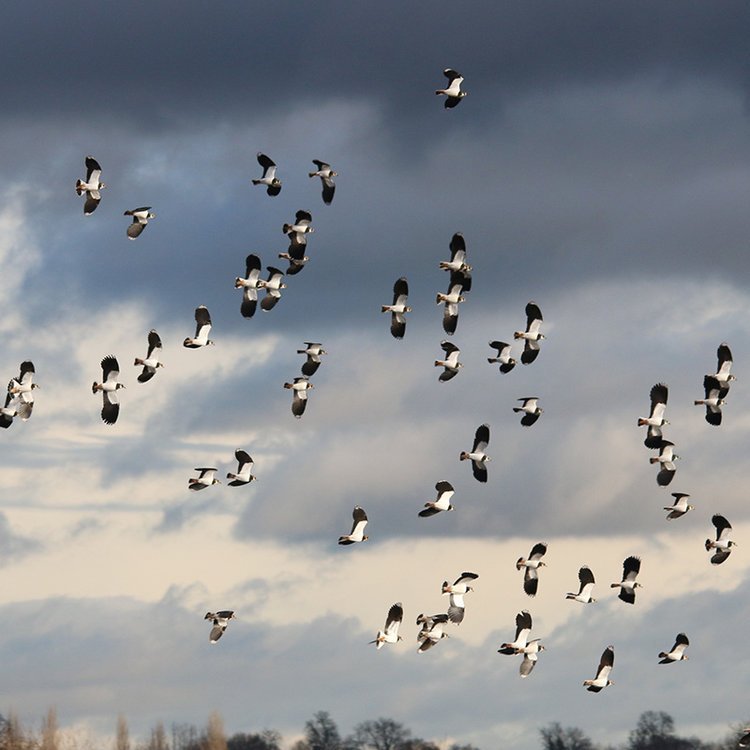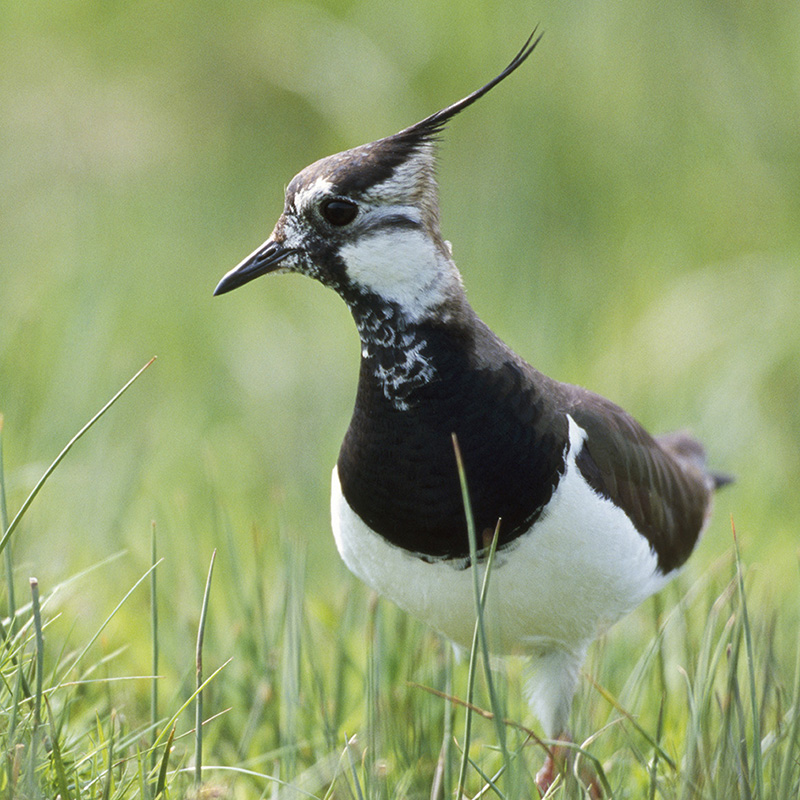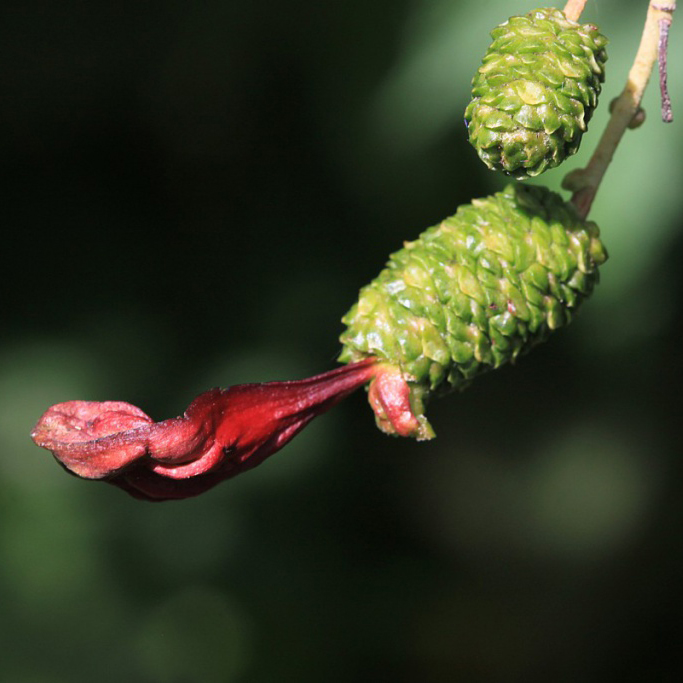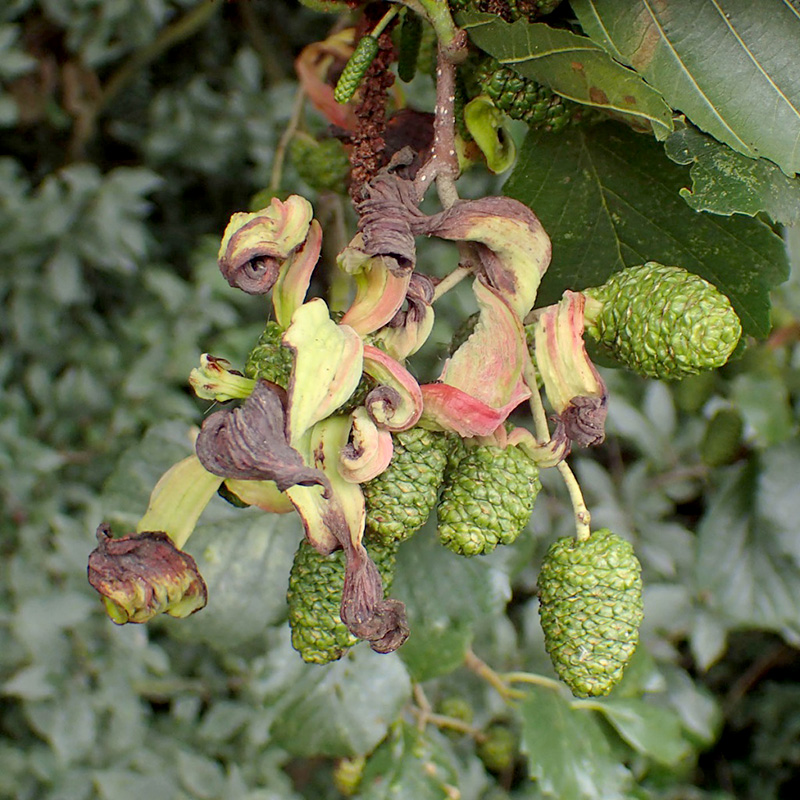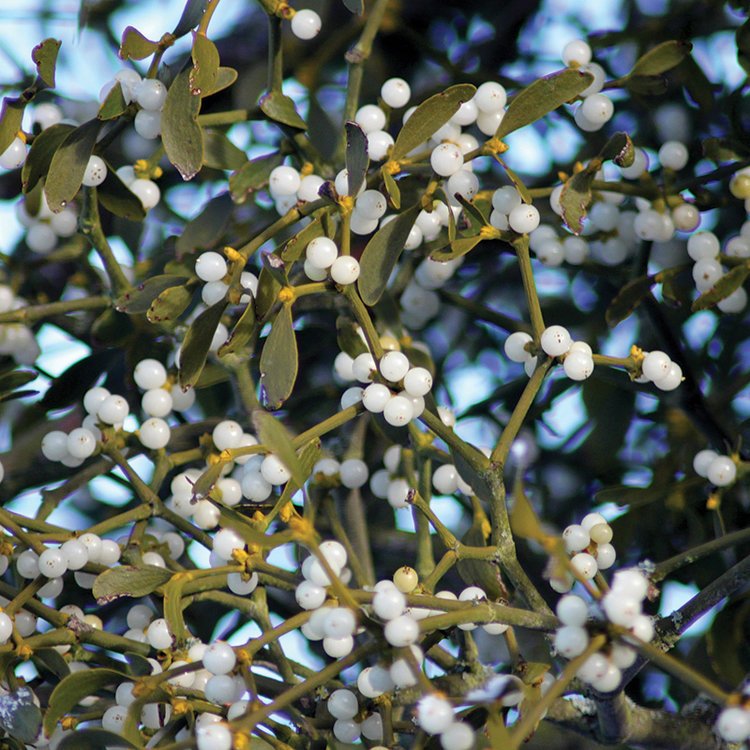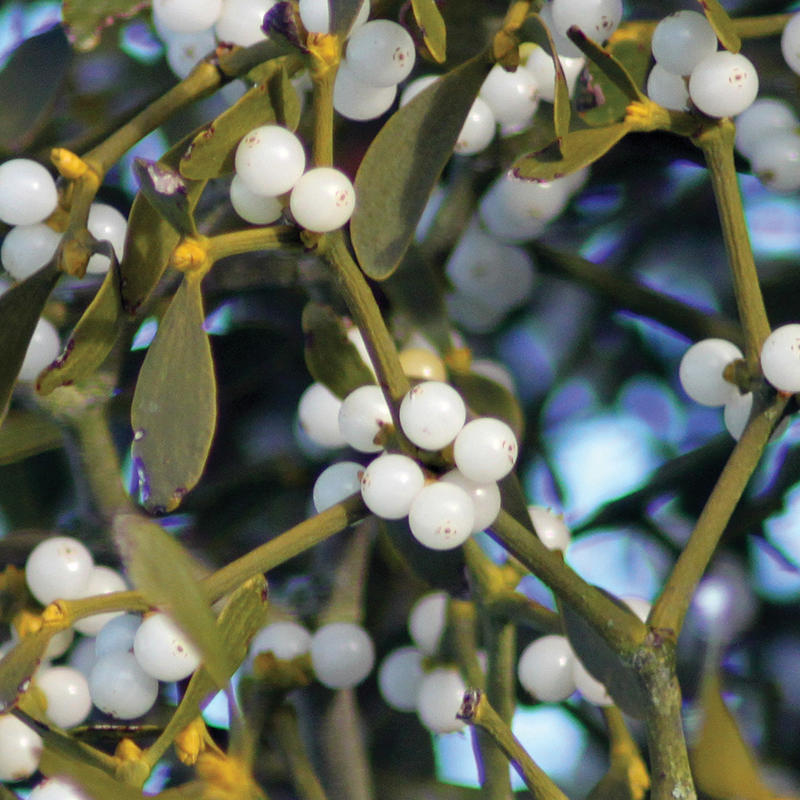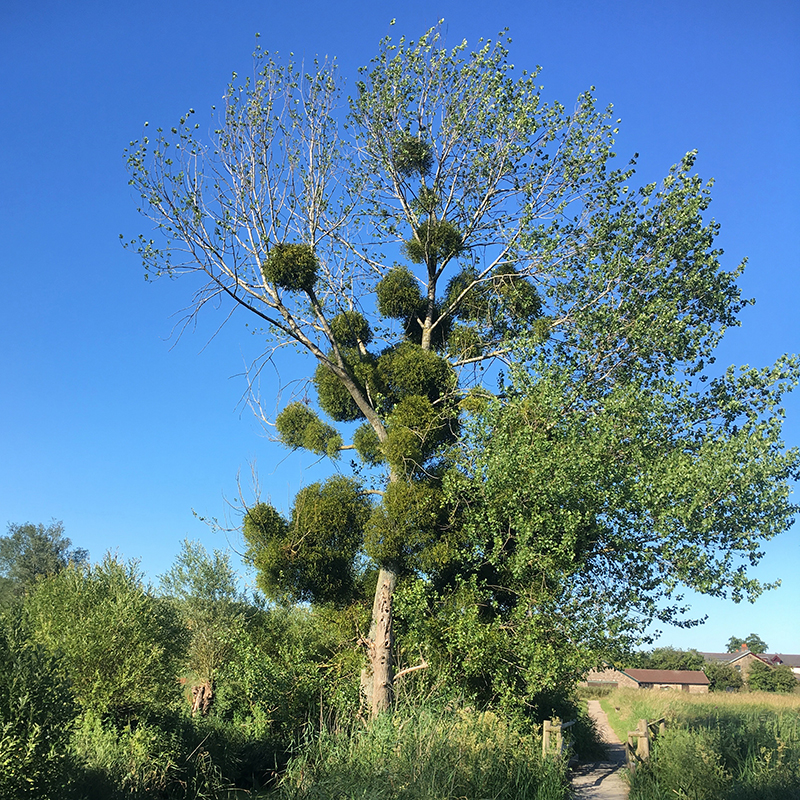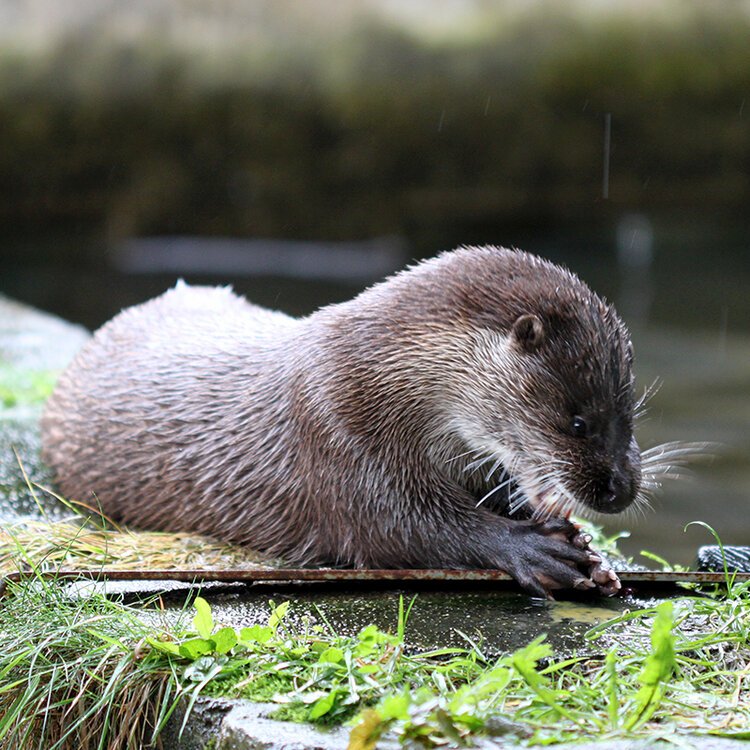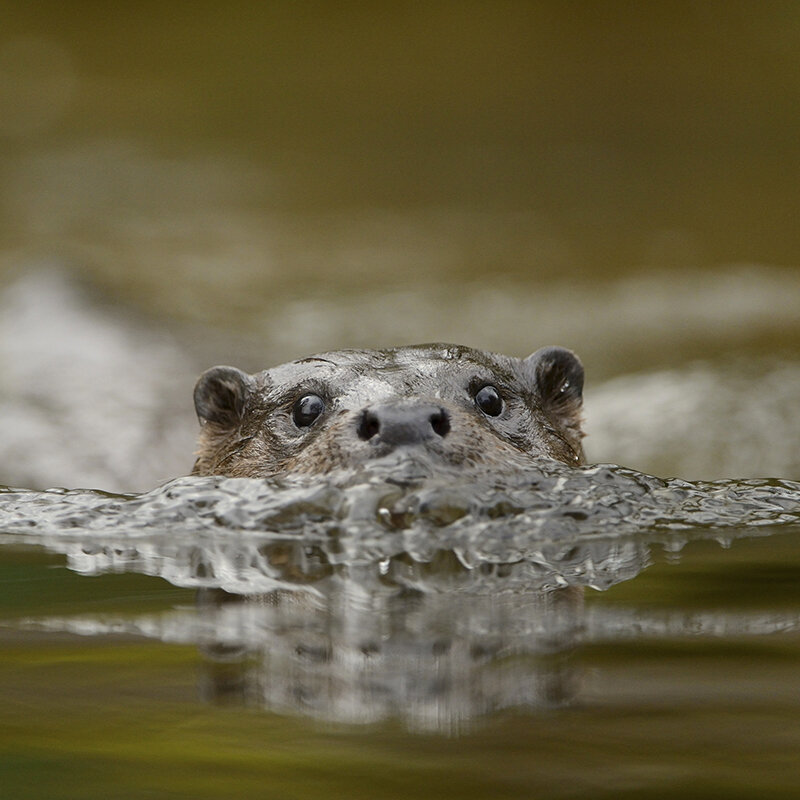Bufo bufo
Common toads are Britain’s largest and heaviest amphibians. The common toad is stocky in appearance, and tends to be brown with some darker markings. Occasionally, some individuals show a reddish colouration. It has thick dry, warty-looking skin, compared to the smooth shiny wet appearance of a frog. Toads also lack the dark patches behind the eye that common frogs have, and have coppery-orange eyes with horizontal pupils.
Frogs use their powerful long hind legs to jump and hop, whereas toads walk or crawl rather than hop/jump, and their legs are quite short. Toads spend most of their adult life on land apart from when they are laying their eggs. They lay their eggs in long strings in large ponds and lakes where the water is slightly deeper; the strings are often wrapped around submerged vegetation.
Toad tadpoles are jet black and often form shoals, whereas frog tadpoles are only black on hatching and do not shoal. The tadpoles of both frogs and toads will develop their back legs first. Generally, toads and frogs complete their development during the summer, but it can be variable with some tadpoles taking longer and some even remain tadpoles over the winter.
Toads have a strong instinct to travel back to their ancestral breeding ponds each spring. It results in mass toad crossings where sadly many end up as road kill.
What they eat
They mainly eat slugs, snails, spiders and other invertebrates which they catch on sticky tongues. Large toads may take slow worms, small grass snakes and mice!
Where and when to see them
Common toads are active from February to October.
Found in many habitats including freshwater bodies, wetlands, grassland, farmland and woodland.
Look for long strings of toadspawn in early spring.
They are more active in wet weather.
View a common toad 10km distribution map of Wales.
Legal status
Common toads are protected by law under the Wildlife & Countryside Act 1981.
Similar Species
There are a number of amphibians that could be confused with the common toad. Note that some are not currently found in Wales.
Common frogs (Rana temporaria)
Common frogs are common, widespread and easily recognisable amphibians. They have smooth, moist skin and long stripy legs. Common frogs are usually olive-green, although their colouration can be variable (from brown, yellow, cream or black, to pink, red, or lime-green). They have a dark patch (‘mask’) around the eye and eardrum, and often have other irregular black blotches over their body and limbs. They have large golden eyes with oval horizontal pupils.
Frogs hop and jump rather than walk or crawl, and they are most active at night. They hibernate during the winter in pond mud or under piles of rotting leaves, logs or stones.
Outside the breeding season, frogs are largely terrestrial and can be found in meadows, gardens and woodland. Breeding takes place in ponds, lakes, canals, and even wet grassland or puddles! Spawning usually occurs in January in the milder areas of the UK, but not until March to April in the North or upland areas. Mating pairs and masses of clumpy frogspawn can often be seen in waterbodies during this time.
Newts
Newts are much longer in the body than toads, and they also have a tail. Their eggs are individually laid and are wrapped in submerged plant leaves. The tadpoles (sometimes called larvae or efts) have a frill of gills behind the head, and will develop front legs first.
Pool frog (Pelophylax lessonae)
Highly unlikely to be seen in Gwent
This species is very rare in the UK, and was previously thought to be extinct. They were recently reintroduced to a site in East Anglia. Pool frogs are variable in colour, the type used in the reintroduction programme are brown with dark patches over the back and a lighter yellowish dorsal stripe. The pool frog is similar in size to the common frog, growing up to 9cm in length. They inflate a pair of white vocal sacs (like balloons) located each side of the mouth when calling. There are no records of this species in Wales.
Non-Native Species:
There are a number of non-native frog species that are found in the UK. There are currently no records of the following species in Wales, but it is useful to be aware of them.
Marsh frog (Pelophylax ridibundus)
Highly unlikely to be seen in Gwent
This species is not native to the UK, and has been introduced. It is a large frog growing up to 13cm and can be vivid green in colour. They have a dorso-lateral ridge, and males have a pair of dark grey vocal sacs which are inflated when calling. Marsh frogs are mainly found in the south-east of the country, and there are no records of the species within Wales.
Edible frog (Pelophylax esculentus)
Highly unlikely to be seen in Gwent
The edible frog was introduced in south-eastern England and is unlikely to be encountered in the local area (there are no records of the species within Wales). They grow to be larger than the common frog, and the males have a pair of pale grey vocal sacs which they inflate when making their loud calls.
North American bullfrog (Lithobates catesbeianus)
Highly unlikely to be seen in Gwent
This is a very large frog growing up to 15cm. This species is very unlikely to be found as there is only one known population in the UK, in Essex.
Did you know?
Common toads can secrete a toxic, foul-tasting substance called bufagin which deter most predators, although grass snakes and hedgehogs are immune.
Other links

